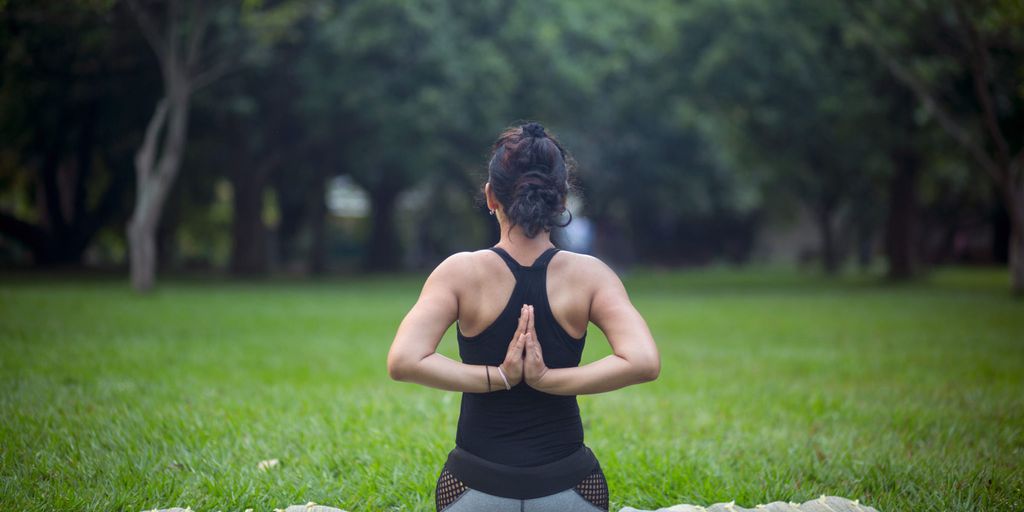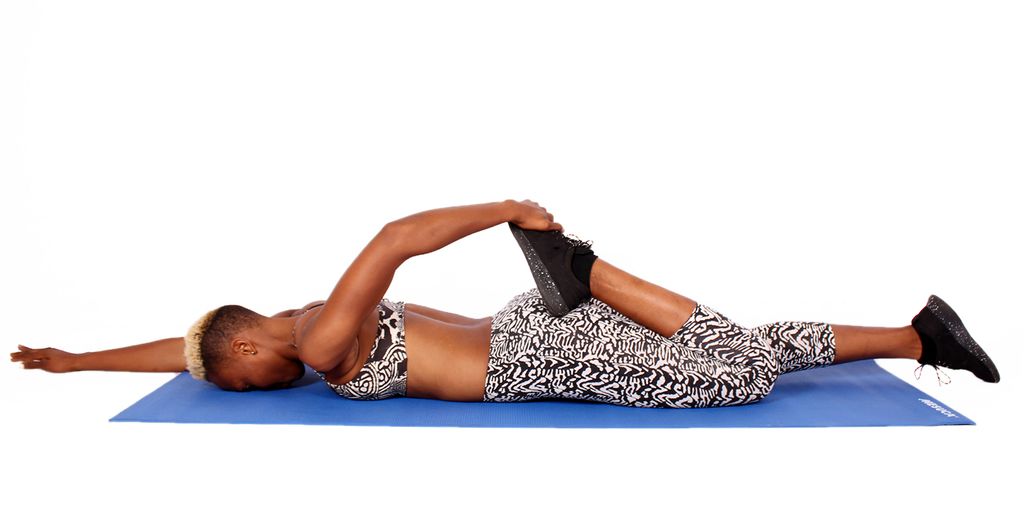
What is the Standard Yoga Mat Size for Optimal Comfort?

Choosing the right yoga mat size is crucial for enhancing your yoga practice, providing comfort, and ensuring proper alignment and safety. This article explores the standard yoga mat size, factors influencing size choice, and the impact of size on your yoga practice, while also reviewing popular sizes and customization options.
Key Takeaways For Standard Yoga Mat Size
- Understanding standard yoga mat dimensions is essential for optimal practice.
- Body type, height, and yoga style significantly influence mat size choice.
- Material and thickness are critical for comfort and functionality.
- The correct standard yoga mat size can enhance physical benefits and psychological well-being.
- Customizing your yoga mat size can lead to improved personal comfort and effectiveness.
Understanding the Standard Yoga Mat Size
Dimensions of a Standard Yoga Mat
The typical dimensions for a standard yoga mat are about 68 inches long and 24 inches wide. This size provides ample space for most yoga poses and is widely accepted in yoga communities. Most mats also have a thickness of about 1/8 inch, which offers basic cushioning without compromising stability.
Why Size Matters in Yoga Practice
Size is crucial in yoga practice as it affects both comfort and safety. A mat that is too small can restrict movement and lead to misalignment, while a mat that is too large can be cumbersome. Optimal mat size ensures that all parts of your body remain on the mat during various poses, which is essential for proper technique and injury prevention.
Comparison with Other Mat Sizes
Standard yoga mats are designed to accommodate a wide range of body types and yoga styles. However, for those who are taller or prefer more space, larger mats are available. Here’s a quick comparison:
| Mat Type | Dimensions (inches) | Thickness (inches) |
|---|---|---|
| Standard | 68 x 24 | 1/8 |
| Large | 72 x 24 | 1/4 |
| Extra Large | 74 x 30 | 1/4 |
Choosing the right size mat is a balance between personal comfort and the practical aspects of carrying and storing the mat.
Factors Influencing the Choice of Yoga Mat Size
Body Type and Height Considerations
Choosing the right yoga mat size often starts with the individual's body type and height. Taller individuals may require longer mats, while those with a broader build might look for wider options to ensure adequate space for various poses.
Types of Yoga Practices
Different styles of yoga can influence mat size choice. For instance, dynamic styles like Vinyasa require more space for movement, whereas stationary practices like Yin Yoga might not. The mat size should accommodate the range of motion needed for the specific type of yoga.
Personal Comfort and Space Requirements
Personal comfort is paramount when selecting a yoga mat. Some practitioners prefer extra space around them, which can help in reducing distractions and increasing focus during practice. This preference can dictate a larger than standard mat size, enhancing the overall yoga experience.
Material and Thickness: Complements to Size
How Material Affects Yoga Mat Size
Different materials can significantly influence the dimensions and usability of a yoga mat. For instance, rubber mats can expand slightly in heat, while PVC mats often retain their shape. Understanding the properties of each material helps in picking the right yoga mat for both durability and comfort.
The Role of Thickness in Comfort
The thickness of a yoga mat is crucial for comfort and can vary from a thin 1/16 inch to a plush 1/4 inch. Thicker mats provide more cushioning, which is beneficial for restorative practices or for those with joint issues. However, thicker mats can be less stable for balance poses, making the choice dependent on personal needs and the type of yoga practiced.
Choosing the Right Material and Thickness
Selecting the right material and thickness for a yoga mat involves balancing between comfort, stability, and durability. Here are some considerations:
- Rubber offers excellent grip and cushion but can be heavy.
- PVC is durable and easy to clean but may not offer the same level of comfort as other materials.
- Natural materials like cotton or jute provide breathability but might lack the cushioning needed for more vigorous practices.
Choosing the right combination of material and thickness is essential for optimizing your yoga practice.
The Impact of Yoga Mat Size on Your Practice
Physical Benefits of the Right Size
Choosing the right size of a yoga mat can significantly enhance your practice by providing ample space for a variety of poses and movements. A mat that is too small can restrict your movements, while a mat that is too large can be cumbersome to transport and store. Optimal mat size ensures comfort and stability during your yoga sessions, which can lead to improved balance and flexibility.
Psychological Effects of Mat Size
The size of your yoga mat can also have psychological effects on your practice. A mat that perfectly fits your body and the space you practice in can create a personal sanctuary, a space that feels safe and conducive to focus and meditation. The right size can help in reducing anxiety and increasing the level of comfort, making your practice more effective and enjoyable.
Practical Tips for Mat Usage
To make the most out of your yoga mat, consider the following tips:
- Ensure your mat is the right size for your body and the types of yoga you practice.
- Store your mat properly to maintain its shape and longevity.
- Clean your mat regularly to prevent the buildup of dirt and odors.
- Experiment with different mat sizes if you feel your current one isn't meeting your needs. This can help you find the perfect balance between portability and stability.
Popular Yoga Mat Sizes and Brands
Review of Top Yoga Mat Brands
Many leading brands have established themselves as favorites in the yoga community due to their quality and consistency. Brands like Manduka, Lululemon, and Gaiam offer mats that not only meet but often exceed industry standards. Manduka's PRO series, for instance, is renowned for its durability and grip.
How Brands Determine Their Standard Sizes
Each brand has its own method for determining the optimal size for a yoga mat. Typically, this involves extensive research on body types and yoga practices. The standard size for most mats is approximately 24 inches wide and 68 inches long, which accommodates a wide range of body sizes and shapes.
Consumer Preferences in Sizes
Preferences vary widely among yoga practitioners. Some prefer extra long mats for tall individuals, while others opt for wide mats for extra space. A notable trend is the preference for vibrant designs and colors which not only serve a practical purpose but also express personal style. The choice of size often reflects a balance between comfort, space, and the type of yoga practice.
Customizing Your Yoga Mat for Optimal Comfort
When to Consider a Custom Size
Customizing your yoga mat size should be considered if standard sizes do not meet your specific body dimensions or if your yoga practice includes unique movements that require more space. This customization can significantly enhance your comfort and performance.
Options for Customization
Several options are available for customizing a yoga mat:
- Choosing a specific length and width
- Selecting a unique thickness
- Opting for personalized designs or patterns
These choices allow for a yoga mat that not only fits your body but also your personal style and practice needs.
Benefits of a Personalized Yoga Mat
A personalized yoga mat offers numerous benefits:
- Improved alignment and safety during practice
- Increased comfort and support
- Enhancement of personal expression through custom designs
Personalization can make a significant difference in how enjoyable and effective your yoga sessions are.
Enhance your yoga practice with a personalized touch by customizing your yoga mat for optimal comfort. At Yune Yoga, we offer a wide range of mats that cater to your unique needs and preferences. Whether you're looking for eco-friendly options, natural rubber, or beautifully designed collections, we have it all. Visit our website to explore our diverse selection and find the perfect mat that feels like it was made just for you. Start customizing your yoga journey today!
Conclusion
In conclusion, choosing the right yoga mat size is crucial for optimal comfort and effectiveness in your practice. The standard size of 68 inches long and 24 inches wide generally suits most individuals, but variations such as 72 inches or 74 inches in length can accommodate taller practitioners. Thickness also plays a vital role, with options ranging from 1/16 inch for travel mats to 1/4 inch for enhanced cushioning. Ultimately, the best yoga mat size depends on your personal needs, practice intensity, and the type of yoga you engage in. By considering these factors, you can select a yoga mat that supports your practice, ensuring comfort, stability, and safety.
Frequently Asked Questions
What are the dimensions of a standard yoga mat?
A standard yoga mat typically measures about 68 inches long and 24 inches wide.
Why is the size of a yoga mat important?
The size of a yoga mat is crucial as it affects comfort, stability, and the space available for various yoga poses.
How do different yoga practices influence the choice of mat size?
Different yoga styles may require more or less space, influencing the choice of a larger or smaller mat depending on the movements and poses involved.
What role does material play in the size and comfort of a yoga mat?
The material of a yoga mat affects its grip, cushioning, and overall durability, which can contribute to the comfort and size perception of the mat.
How can the right size of a yoga mat benefit my practice physically and psychologically?
Choosing the right size can enhance physical support and comfort during practice, while also promoting a better mental focus and a more satisfying yoga experience.
What are some popular yoga mat brands and their standard sizes?
Brands like Manduka, Lululemon, and Gaiam offer various sizes, with standard mats typically around 68 inches by 24 inches, though options may vary.


